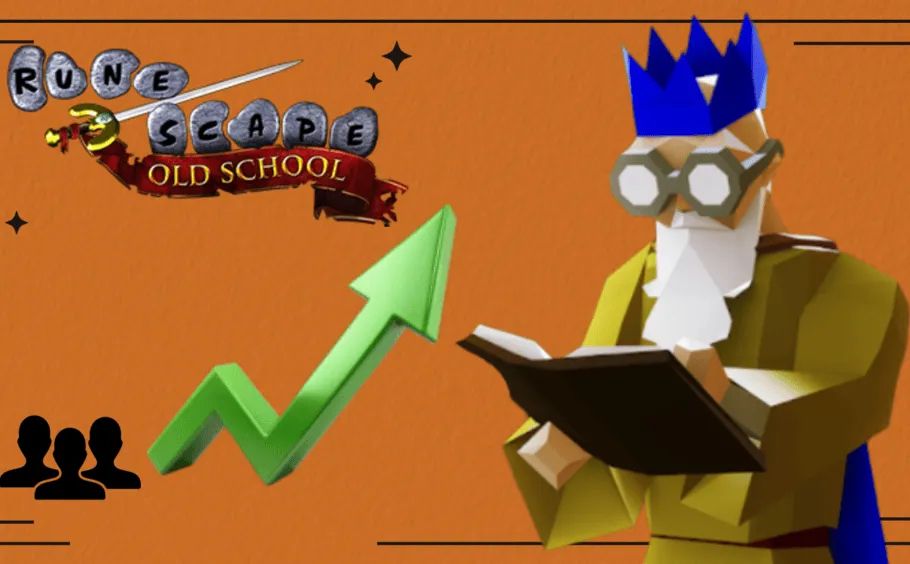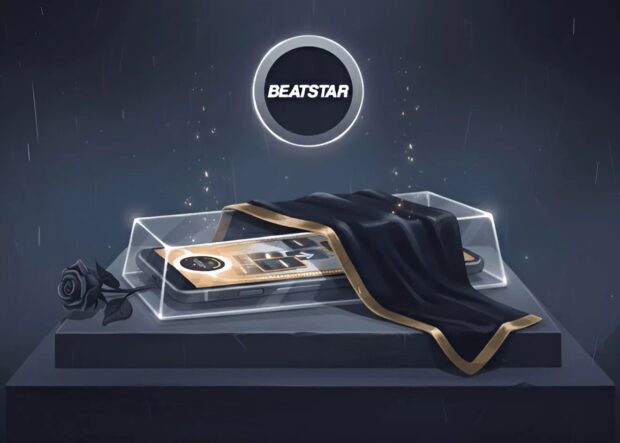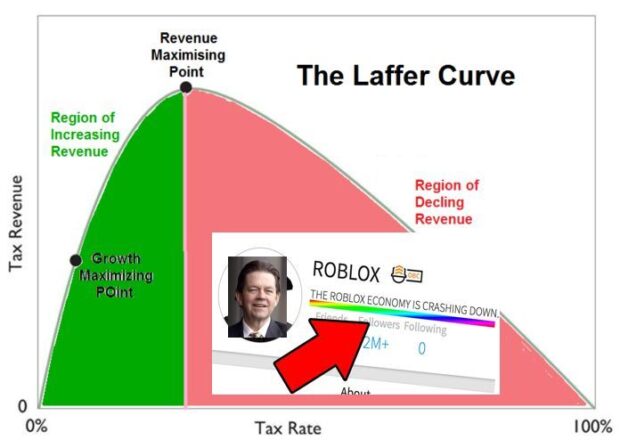
Old School RuneScape Still Grows After 12 Years of Relaunch
Journal 1 Bryan Cindell August 24
I’m going to love writing this one.
I’ve been playing RuneScape since I was 11 years old. I remember being on our family computer downstairs back in 2004 at 2 a.m. when I was supposed to be asleep way before that. I would hear my dad wake up upstairs and walk to the bathroom. That was my cue to haul ass back upstairs, slip into my room, and pretend to be asleep as he inevitably came to check on me. Most of the time I got away with it and could go back to fishing lobsters or chopping a few more trees for a Woodcutting level.
Fast forward to today and the game is still not only alive, but continually smashing player records with the most recent run up being extra wild with ~250,000 concurrent players being recorded. Not bad for a 12 year old game (in it’s current form), more on that soon.

How? Has this game in it’s current form continued to grow in the 12 years it’s been out? Let’s delve into some history of the game and see what takeaways can come from it
If you’re not familiar with the history of Runescape, I will try to keep it brief. It all began with Andrew Gower’s text-based DeviousMUD in the late ’90s, which led to the browser game we know as RuneScape Classic in 2001. After that, Jagex completely rebuilt the game in 2004, creating RuneScape 2 with a fully 3D world, which became the version most of us played for years. Then came the big split. In 2012, they released the Evolution of Combat (EOC) update, which changed the game’s combat system completely and alienated a ton of the old players. In a brilliant move, Jagex listened and brought back an old 2007 version of the game, launching it as a separate client called Old School RuneScape (OSRS) in 2013. Now, you have two distinct games: the modern RuneScape 3 (RS3) with its new combat and graphics, and the community-driven OSRS, which holds onto that classic, nostalgic feel. Worth noting that Old School RuneScape (OSRS) was officially launched on mobile devices for both Android and iOS on October 30, 2018.

In 2012, RuneScape released the Evolution of Combat (EOC) update – a massive overhaul that changed the game’s combat system entirely. The old appeal of RuneScape had been its simplicity combined with surprising depth, but EOC introduced MMO-style mechanics that felt overly complicated to many long-time players. While some embraced it, backlash was intense, with in-game riots and forums flooded with complaints. World 66 Falador was full of players expressing their feelings.
Recognising the demand for the old style, Jagex actually found a backup of the old game from 2007 and in 2013 launched Old School RuneScape (OSRS) alongside the updated RuneScape (EOC). This decision not only salvaged trust but created two distinct paths: OSRS, driven by nostalgia and community, and RS3, the modernized version with enhanced graphics.
Now that we have a little background on the history of the game. Let’s talk about what the game is and what it offers players. RuneScape is a fantasy MMORPG set in the world of Gielinor. What makes it unique is that it’s a “sandbox” game with no set path. Instead of choosing a class, you train over two dozen different skills – like combat, fishing, mining, and woodcutting – to create your own adventure. You can follow quests with deep stories, fight powerful bosses, earn a fortune by trading, or simply relax and train your skills. It offers an incredible amount of player freedom, letting you set your own goals and play exactly how you want. The game has an endless amount of content to explore and while it can be considered grindy in some aspects with the average account taking 3000-5000 hours to max all of the games skill and to completely finish the game will take you much longer than that.

When we look at the graph for this game we can see that overtime it had a bit of a lull period after launch up until 2015, this was due in part to the trust not being there from the community given the major backlash they had caused with the EOC update. Along with releasing the game with very few updates. Things started to pickup in late 2014 and the reason why ended up being a critical reason as to why I think the game has continued to grow throughout these years. Jagex introduced the Polling Booth and said to the players, this is your game now. We’ll propose updates and you the player get to decide what content makes it into the game. Not many players paid attention to this at the time, but as the game got a bit more serious about content updates and major expansions the idea started to pickup steam.


Community-Driven Development: Why It Works in OSRS
The polling system in Old School RuneScape (OSRS) is simple: if a proposed change gets more than 75% “Yes” votes, it makes it into the game. If not, it gets dropped. While there have been exceptions – for example, content sitting just under the threshold (74.9%) that was later repolled and passed – the rule is consistent. This mechanic has created a unique sense of ownership among players because they know their votes directly shape the game. That sense of agency is one of the major reasons OSRS continues to grow.
Would this system work in mobile?
Hard to say. OSRS runs on a subscription-based model with membership bonds that can be bought and traded, whereas most mobile games rely heavily on microtransactions. A community-driven voting system would be difficult in free-to-play mobile unless the game is already financially sustainable. On top of that, I can’t imagine many mobile devs handing that much control to players, even with the safeguard of devs guiding the vision and explaining rationale behind updates.
What other factors help the game continue to grow?

Another factor driving OSRS’s growth is the sheer volume and consistency of updates. Major expansions, quality-of-life changes, and content reworks are constantly rolled out – and all of it goes through polling. If you look at update calendars from 2013–2021, (don’t have further, but you get the idea) it’s staggering how much has been delivered by the team and continues to be to this day along with very clearly communicated roadmaps.


MMORPG players expect ongoing content, but what makes OSRS special is how often they get it right. Sure, Jagex has had failures (EOC being the big one), but they’ve learned from mistakes and are now highly receptive to community feedback. Updates are framed as logical “next steps” in the game’s evolution, expanding maps and storylines in ways that feel faithful to RuneScape’s 2007 roots. What’s more impressive is how they balance updates to appeal to both new players and hardcore veterans.
Developers Who Play Their Own Game
One of Jagex’s biggest strengths is that their devs play OSRS. Designers, QA analysts, and even higher-level staff are actively involved in the game. This creates a feedback loop where updates aren’t just abstract design choices – they’re informed by real player experiences.
For example, one QA analyst has even achieved “completion” status at the Grandmaster level, which requires finishing some of the game’s most brutal challenges – tasks that take months for many players, if they’re ever completed at all. That level of personal investment shows up in how well updates resonate with the community.
Jagex has also hired from the player base itself. Chris Archie – who once ran a popular community montage channel – joined the OSRS team and provided valuable insight into what players really wanted.

Experimentation Through Temporary Game Modes
One of the more underrated reasons OSRS has stayed fresh is Jagex’s willingness to experiment with temporary game modes. These aren’t permanent additions, but rather short-term experiments that test new ideas and give players alternative ways to experience the game. The beauty of this approach is that Jagex opens up temporary servers that have no effect on the main game.
The two major ones for Jagex have been Deadman mode (which appeals to PVP players) Leagues (which caters to completionists) and seasonal updates (for all players)
Deadman Mode
Originally launched as a high-risk PvP seasonal mode, it stripped away the safety of the main game and encouraged brutal competition with heavy rewards. While not every iteration was perfectly balanced (Watch this video for lols), Jagex continually reworked DMM based on player feedback. The seasonal resets kept it exciting, and over time it evolved into competitive tournaments with real-world prize pools. DMM proved that OSRS players were eager for hardcore, experimental content that sat alongside – but didn’t disrupt – the core game.
Leagues
Another major success story is Leagues. These are time-limited events where players start fresh accounts under unique rulesets, like accelerated XP rates, locked regions, or powerful relics that reshape gameplay. Leagues give players a sense of progression and discovery all over again, but in a condensed and novel format. They’ve become one of the most beloved experimental modes in OSRS, largely because Jagex listens after each League and tweaks the next one based on what players enjoyed (or didn’t). For example, the first League was more about raw novelty, but by the second and third, Jagex refined progression systems, relic power balance, and reward structures to make them more compelling.
While temporary live-ops modes are common in mobile games, they’re usually stand-alone events and rarely change the core gameplay the way Jagex’s experiments do. Imagine starting fresh in a separate Clash of Clans server for a limited time, with wild battle modifiers that don’t exist in the main game and 20x the loot per raid with challenges to complete and event unique rewards at the end of the time period – that’s the kind of twist Jagex brings to OSRS.
I understand why, though. It’s tough for dev teams to commit to something so major that may or may not succeed when they could instead be working on five smaller features and A/B testing them before scaling up. Still, there’s something about these big swings Jagex takes – and then refining them with community feedback – that I believe has played a big role in the game’s continued growth.
Old School Runescape Community

Another reason why OSRS has continued to thrive is the community itself. This game isn’t just about skilling, questing, or chasing the next boss drop – it’s about the people you do it with. RuneScape has always had this weird magic of turning random online encounters into long-term friendships. Whether it’s joining a clan, grinding for a raid together, or just hanging out in a bank skilling and chatting, the social side of OSRS is as much a part of the experience as the gameplay itself.
The clan system, group content like Raids, and even older activities like Clan Wars or Castle Wars all encourage players to stick around because they’ve got a team depending on them. On top of that, the Grand Exchange economy has its own layer of social gameplay. Flipping items, merching, or even just calling out trades in chat gives the game this “living marketplace” feel that makes it feel alive in a way few MMOs pull off anymore.
And then there’s nostalgia. A huge part of OSRS’s player base is made up of people who played back in the early 2000s like myself and came back when Old School relaunched. That shared history gives the community this sense of “we were all there” – whether it’s laughing about noob mistakes at Lumbridge cows or remembering the first time you died in the Wilderness getting lured for your first full rune set. It’s not just about the game itself, it’s about growing up with it and now sharing that with new players or even their own kids now.
This kind of community stickiness is something most mobile games struggle with. A lot of mobile communities are based on temporary clans or matchmaking systems that disappear when the game dies down. In contrast, OSRS has real staying power because of these social bonds. When your friends are still playing, you keep logging in. That’s not something you can fake with push notifications or daily login rewards – it’s built by giving players the tools and freedom to create those connections naturally.
Adding to the momentum of record high player counts is the fact that a ton of World of Warcraft streamers have recently switched to Old School Runescape finding that WoW classic had run out of content. The Old School Runescape community loved watching these seasoned MMORPG players discover the game and triggered a ton of nostalgic moments and brought in a ton of newer players. Take this clip below from Sodapoppin where he dies in a most classic fashion running past the dark wizards south of Varrock. This, to everyone who has played OSRS before, is almost a rite of passage, but in the moment you feel flabbergasted when it happens to you.
Monetization & Trust

Another big reason OSRS works is how simple and fair the monetization is. You pay for membership, and that’s basically it. If you don’t want to spend real money, you can even buy membership with Bonds using in-game gold. That setup alone earns a ton of goodwill because it respects both types of players – the ones with more time than money and the ones with more money than time.
Compare that to RS3, which went all-in on microtransactions with Treasure Hunter and cosmetics. A lot of players felt exploited, and it damaged trust. OSRS has stayed away from that model, and the community hasn’t forgotten it. People are more willing to grind thousands of hours here because they know the devs aren’t trying to squeeze them every step of the way. RS3 has even started to experiment with removing MTX which in and of itself will be interesting to see the impacts off. We’ll be keeping a close eye on the impacts of this following their live tests.
Looking Ahead – What Mobile Devs Should Take From This

So why is Old School RuneScape still breaking records 12 years after its relaunch, while most online games are lucky to survive a few? It comes down to a mix of trust, consistency, and giving players real ownership in the game. Polls make players feel heard. Regular updates keep the world alive. Temporary modes keep things fresh. Devs actually play their own game. And the monetization is fair enough that people stick around for the long haul.
That’s a recipe a lot of mobile devs could learn from. Too many mobile games treat their players like short-term wallets instead of long-term communities. OSRS proves that if you build trust, listen to feedback, and deliver meaningful updates, people will not only play your game – they’ll live in it.
I’m not saying every mobile game can copy-paste the OSRS model. But the core lessons are the same: give players a voice, respect their time and money, and make a game so fun your own dev team can’t stop playing it. Do that, and maybe your game won’t just survive in the crowded mobile market – it might still be thriving a decade later.
Seriously…. if you haven’t tried Old School RuneScape yet, I’d highly recommend giving it a few hours when you can. The game is more active and vibrant now than it’s ever been.
If you have the time (3 1/2 hours) this 4 year old breakdown as to why Runescape is awesome is worth the watch.








